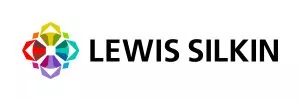The long-promised, interminably-debated and much-amended EU Platform Workers Directive has been passed. The final version delegates key decisions on who is a platform worker to the Member States, while strengthening controls over automated decision making and the need for human involvement in decisions affecting workers.
"Gradually, then suddenly" is how a character in Hemingway's novel The Sun also Rises describes going bankrupt. But this oft-quoted phrase might equally apply to the passage of the EU's Platform Workers Directive. After years of glacial progress and political wrangling, which appeared to have ground to a halt completely before Christmas, it was suddenly announced this week that a compromise – and a final text – had been agreed.
How did we get there in the end? Well, like all good political compromises, with more fudge than the average Cadbury's factory. The main sticking point in the final months had been the EU's inability to reach a compromise between countries such as Spain, which wanted virtually everyone working through a platform to be a worker, and northern European liberals such as Sweden and the Baltic States which preferred a much more "pro-platform", business friendly approach. And if you can't reach an agreement? One solution is to give up trying, which is essentially what the EU has done, leaving key issues up to Member States to decide.
Presumptions and how to rebut them
Scroll back to 21 December 2023, when an earlier political compromise was announced under the Spanish presidency. As we reported at that time, the proposed directive would have required a presumption of an employment relationship when two out of a list of five "indicators" of control or direction were present, such as upper limits on the amount of money workers could receive, supervision of their performance including by electronic means, and control over the distribution or allocation of tasks.
Cue a huge backlash, and the compromise falling apart within a matter of hours. And it seemed very likely that would be the end of it, at least until after the EU Parliament elections in May 2024, until this week, when a resolution was suddenly announced.
Where have we ended up? The revised directive still requires each Member State to create a legal presumption that a contractual relationship between a "digital labour platform" and a "platform worker" is an employment relationship in certain circumstances. However, rather than prescribing those circumstances, the directive merely says that this must apply "when facts indicating control and direction, according to national law, collective agreements or practice in force in the Member States and with consideration to the case-law of the Court of Justice, are found". In other words, Member States can fall back on existing (or, as the case may be, newly-created) national law tests as to what constitutes "control" and "direction", merely having "consideration" for the ECJ's case-law (which, given the fairly hands off approach that Court has tended to take to this issue in the past, may not take things much further forward). Once a presumption has been established, "it shall be for the digital labour platform to prove that the contractual relationship in question is not an employment relationship as defined by the law, collective agreements or practice in force in the Member States, with consideration to the case-law of the Court of Justice". So there will be some EU-wide harmonisation – but not as much as previously envisaged.
When does the presumption apply? The answer is "in all relevant administrative or judicial proceedings where the correct determination of the employment status of the person performing platform work is at stake", although not to "proceedings which concern tax, criminal and social security matters" – unless the Member State chooses to apply the presumption as a matter of national law. Both platform workers and their representatives are to have the right to start proceedings to ascertain their status, and "competent national authorities" – Labour Inspectorates and their equivalents – will be under a duty to do so when they think platform workers have been misclassified. Each Member State will also be required to put in place a "framework of supporting measures", guidance ("including in the form of concrete and practical recommendations, for digital labour platforms, persons performing platform work and the social partners to understand and implement the legal presumption including on the procedures for rebutting it"), and a regime to allow for "controls and inspections" of platforms.
Are we all platform workers?
We previously reported on a welcome amendment to an earlier iteration of the draft directive which reduced the risk that virtually any company using computers in its business in the EU to organise work would be considered a platform, with anyone working for such a company a platform worker. That position has broadly held in the latest draft, with "digital labour platforms" still limited to those whose business "involves the use of automated monitoring or decision-making systems".
Having said this, there has been a broadening of the definition of "automated monitoring systems" to encompass all "systems which are used for, or support monitoring, supervising or evaluating the work performance of persons performing platform work or the activities carried out within the work environment, including by collecting personal data, through electronic means", while "automated decision-making systems" now means "systems which are used to take or support, through electronic means, decisions that significantly affect persons performing platform work, including the working conditions of platform workers, in particular decisions affecting their recruitment, access to and organisation of work assignments, their earnings including the pricing of individual assignments, their safety and health, their working time, their access to training, promotion or its equivalent, their contractual status, including the restriction, suspension or termination of their account".
Given the burgeoning use of AI tools in various parts of the employment relationship even in more "traditional" employers, the scope for creative arguments that "digital labour platforms" are not limited to those generally perceived to be part of the "gig economy" still exists, even if this is not the EU's intention. And as a "person performing platform work" is simply "any individual performing platform work", and "platform work" is, in essence, "any work organised through a digital labour platform", there is a certain circularity – if I fall into the definition of a digital labour platform, it automatically follows that anyone working through me is a platform worker and has the rights the directive confers. The EU has however retained an express exclusion for any platform "whose primary purpose is to exploit or share assets" – good news for the likes of AirBnB.
Algorithmic management and automated decision making
We also previously reported on the provision the directive makes for controls on automated monitoring and decision making systems. The final text, doubtless influenced by the growing debate around AI, retains and expands on these: for example, there is now to be a ban on using these to "predict the exercise of fundamental rights, including the right of association [and] the right of collective bargaining", or to "infer racial or ethnic origin, migration status, political opinions, religious or philosophical beliefs, disability, state of health, including chronic disease or HIV status... emotional or psychological state, trade union membership, [or] a person's sex life or sexual orientation". There will be a new ban on "process[ing] any biometric data... of a person performing platform work to establish that person's identity by comparing that data to stored biometric data of individuals in a database" – meaning so-called "one-to-many" identity verification will be banned, although "one-to-one" checks will be allowed (indeed, encouraged). There will also be a new requirement to carry out a data protection impact assessment when using automated monitoring and decision-making systems with persons performing platform work, and to provide it to worker representatives.
On top of requirements in previous drafts to give platform workers information about the use of automated monitoring and decision making systems, other new obligations include giving them "concise information about the systems and their features that directly affect them, including their working conditions where applicable, at the latest on the first working day, prior to the introduction of changes affecting working conditions, the organisation of work or monitoring work performance, or at any time upon their request", and also on request "comprehensive and detailed information about all relevant systems and their features". Similar information must also be given to worker representatives.
More generally, the final text of the directive contemplates a greater role for human involvement in decision making, and for worker representatives, than was the case with previous drafts. For example, platforms will now be required to review at least every two years, with the involvement of worker representatives, the impact of individual decisions taken or supported by automated monitoring and decision-making systems used by the platform on persons doing platform work. If there are no worker representatives, obligations under the directive can generally be satisfied by the platform informing its workers directly about decisions likely to lead to the introduction of or substantial changes in the use of automated monitoring or decision-making systems.
There is also an express new requirement that "any decision to restrict, suspend or terminate the contractual relationship or the account of a person performing platform work or any other decision of equivalent detriment shall be taken by a human being", along with a new right to "a sufficiently precise and adequately substantiated reply" in writing within two weeks of a request of "any decision taken or supported by an automated decision-making system", with the latest text removing an earlier requirement that that decision be "significant". A further new requirement will ensure that platforms take preventive measures, including effective reporting channels, to protect workers from violence and harassment. Platform workers will also enjoy a new right to data portability: to receaive "without hindrance and in a structured, commonly used and machine-readable format, any personal data generated through their performance of work in the context of a digital labour platform's automated monitoring and decision-making systems, including ratings and reviews, to transmit them or have them transmitted to a third party, including another digital labour platform".
What happens next?
There will be a two-year implementation period for Member States to pass the directive into domestic law. The clock only starts ticking twenty days after publication in the Official Journal. Before then, various steps must be taken – the final text needs to be produced in all languages, and both the EU Parliament and the Council must adopt the text. It can be reasonably assumed, however, that while this may take a little time the directive is now on its way to becoming law.
The content of this article is intended to provide a general guide to the subject matter. Specialist advice should be sought about your specific circumstances.

